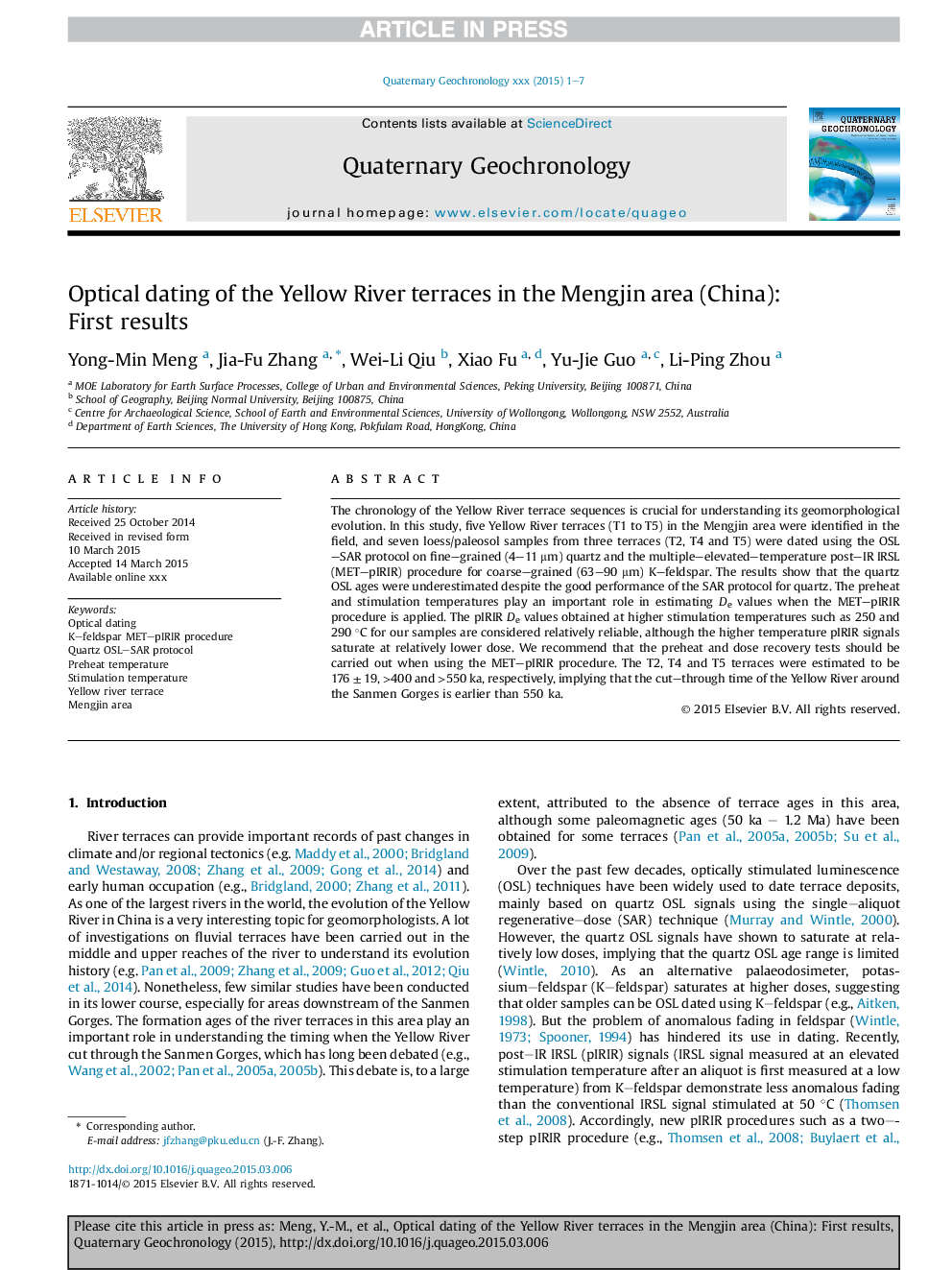| Article ID | Journal | Published Year | Pages | File Type |
|---|---|---|---|---|
| 6442546 | Quaternary Geochronology | 2015 | 7 Pages |
Abstract
The chronology of the Yellow River terrace sequences is crucial for understanding its geomorphological evolution. In this study, five Yellow River terraces (T1 to T5) in the Mengjin area were identified in the field, and seven loess/paleosol samples from three terraces (T2, T4 and T5) were dated using the OSL-SAR protocol on fine-grained (4-11 μm) quartz and the multiple-elevated-temperature post-IR IRSL (MET-pIRIR) procedure for coarse-grained (63-90 μm) K-feldspar. The results show that the quartz OSL ages were underestimated despite the good performance of the SAR protocol for quartz. The preheat and stimulation temperatures play an important role in estimating De values when the MET-pIRIR procedure is applied. The pIRIR De values obtained at higher stimulation temperatures such as 250 and 290 °C for our samples are considered relatively reliable, although the higher temperature pIRIR signals saturate at relatively lower dose. We recommend that the preheat and dose recovery tests should be carried out when using the MET-pIRIR procedure. The T2, T4 and T5 terraces were estimated to be 176 ± 19, >400 and >550 ka, respectively, implying that the cut-through time of the Yellow River around the Sanmen Gorges is earlier than 550 ka.
Keywords
Related Topics
Physical Sciences and Engineering
Earth and Planetary Sciences
Geochemistry and Petrology
Authors
Yong-Min Meng, Jia-Fu Zhang, Wei-Li Qiu, Xiao Fu, Yu-Jie Guo, Li-Ping Zhou,
